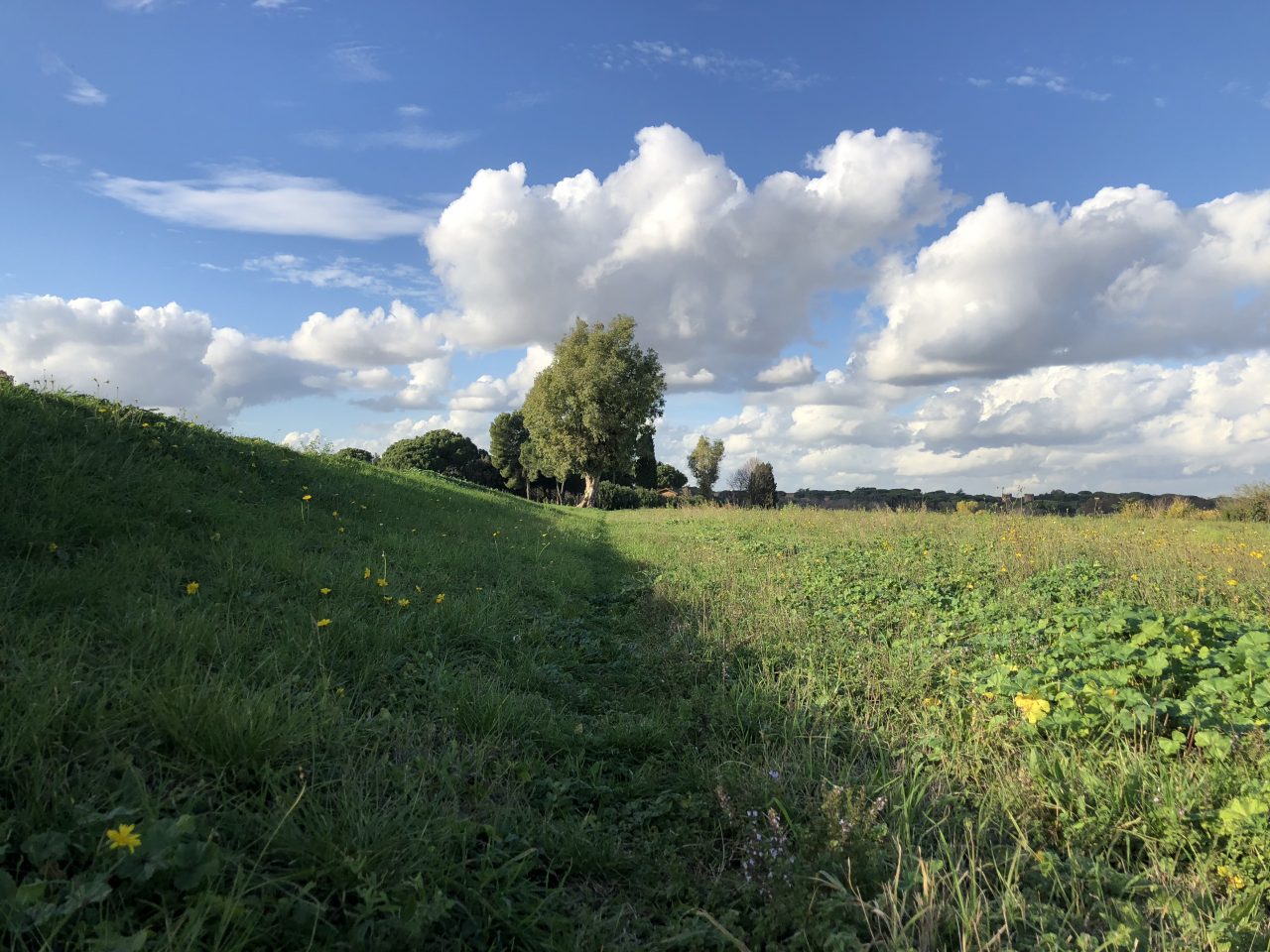Leonid Tsvetkov
The work of artist Leonid Tvetkov is part of Exploded View, read more
I started this project by thinking about the paths I navigate through the park. At first I considered paths as ways of knowing how to cross landscapes. At the same time, paths are evidence of the ways landscapes are understood; of attempts to make sense of the surroundings through navigation. There are multiple ways to solve a math problem and many different ways to cross a landscape, but the elegant solutions are often rare and often considered beautiful.
I want to make a work about walking, paths and narratives, the narratives we create as well as the narratives that create us. To walk a trail is to follow– to follow a path and to not get lost. Paths are created through their continuous use; they are not the work of a single trail maker but are optimized through every single walker that navigates them, solidifying trails anew with each trip. Without use, paths wither and dissolve. To follow a trace is to create a path and each path then holds within it a kind of internal and evanescent logic; neural pathways connect our thoughts and memories and create consciousness; wired paths of communication run deep beneath our feet and high above our heads and create communal narratives; winding paths made by traces and hardened by concrete and technology form an environment within which we live and function.
In my project, I am investigating how paths function as systems of signs for decision and choice making. As a kind of in-between intelligence, networks of paths and roads form a syntax that tells their own story. Yet crossing a landscape and tracing a path are not undertaken by human footsteps alone; a trail is not simply created but is also unveiled through us. My own practice involves seeking a path that is in some sense already there: Space and time dictate a way of seeing an interconnection of processes revealed by and discovered in the project at hand. As I walk the trails in the park, the discoveries that I make are logged and translated into a form of installation that creates its own narrative, also dictated, at least in part, by the landscape, the historical, and contemporary uses of these parks, and my own imagined history.
Pathways are also social organisms. Like the mycelium structures of fungi that criss-cross the landscape in an invisible, underground network beneath each park, lawn, and forest, the trails in both parks function as subconscious lines of connection that use and hold the landscape together and reveal its further meaning. Trails form social networks that spread and flow over and under the surface of earth, connecting inhabitants, water, and chemicals along lines of material and human communication. I am therefore also investigating the mycological landscape of each park, finding in fungi both a metaphor for human cultural exchange and a landscape that exceeds our intervention. Hiking along paths, I encounter mushrooms, the surface of networks beneath my feet, and reach out to additional narratives that connect me to others, from local mycology clubs to the industrial production of mushrooms in the numerous caves of the Via Appia archaeological park. The interconnected mycelium structures and networks as well as mycorrhizal relationships and chemical information transfer accompany my study of paths as an interconnected social organism. Mycology is thus one of the many connections I can envision between the two parks as my process continues.
Leonid Tsvetkov works together with Gert-Jan Burgers (VU-Chair in Mediterranean archaeology and director of CLUE+).
Leonid Tsvetkov (1980) is an Amsterdam based Russian-American artist best known for his site-specific installations, manufactured spaces, and research into residues, history, and the nature of change. A graduate of Yale University (2006), he has been a fellow of the Rijksakademie (Amsterdam), the American Academy in Rome, and Asia Culture Institute (Gwangju, South Korea), as well as other institutes in Europe and the United States. His work investigates the frailty of physical, social, and conceptual boundaries, calling attention to the impermanence of landscapes, borders, and memory. A process-based artist, he employs archaeological deposits, consumer waste, electro-chemical reactions, social encounters, and material interventions to create objects and landscapes designed to link place and memory, monument and event. His work has appeared at RA Foundation Hanoi, (Vietnam), Z-33 Hasselt, (Belgium), Marres House for Contemporary Culture Maastricht, (Netherlands), Sammlung Ludwig Bamberg, (Germany) and at the Ex Elettrofonica Gallery (Rome), as well as in several other locations in Europe, the United States, and Asia.
More info: https://leonidtsvetkov.com/








